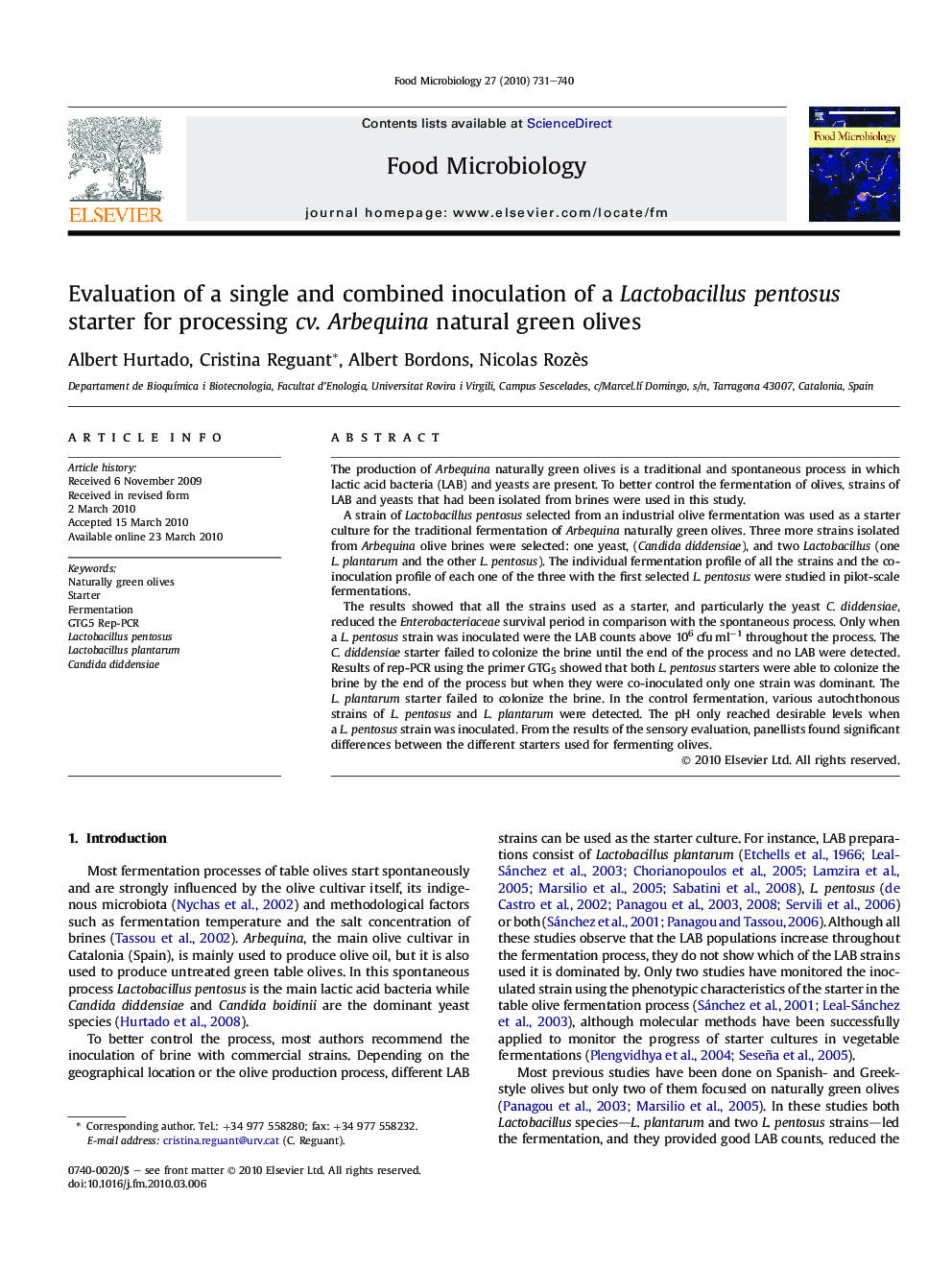| Article ID | Journal | Published Year | Pages | File Type |
|---|---|---|---|---|
| 4363383 | Food Microbiology | 2010 | 10 Pages |
The production of Arbequina naturally green olives is a traditional and spontaneous process in which lactic acid bacteria (LAB) and yeasts are present. To better control the fermentation of olives, strains of LAB and yeasts that had been isolated from brines were used in this study.A strain of Lactobacillus pentosus selected from an industrial olive fermentation was used as a starter culture for the traditional fermentation of Arbequina naturally green olives. Three more strains isolated from Arbequina olive brines were selected: one yeast, (Candida diddensiae), and two Lactobacillus (one L. plantarum and the other L. pentosus). The individual fermentation profile of all the strains and the co-inoculation profile of each one of the three with the first selected L. pentosus were studied in pilot-scale fermentations.The results showed that all the strains used as a starter, and particularly the yeast C. diddensiae, reduced the Enterobacteriaceae survival period in comparison with the spontaneous process. Only when a L. pentosus strain was inoculated were the LAB counts above 106 cfu ml−1 throughout the process. The C. diddensiae starter failed to colonize the brine until the end of the process and no LAB were detected. Results of rep-PCR using the primer GTG5 showed that both L. pentosus starters were able to colonize the brine by the end of the process but when they were co-inoculated only one strain was dominant. The L. plantarum starter failed to colonize the brine. In the control fermentation, various autochthonous strains of L. pentosus and L. plantarum were detected. The pH only reached desirable levels when a L. pentosus strain was inoculated. From the results of the sensory evaluation, panellists found significant differences between the different starters used for fermenting olives.
